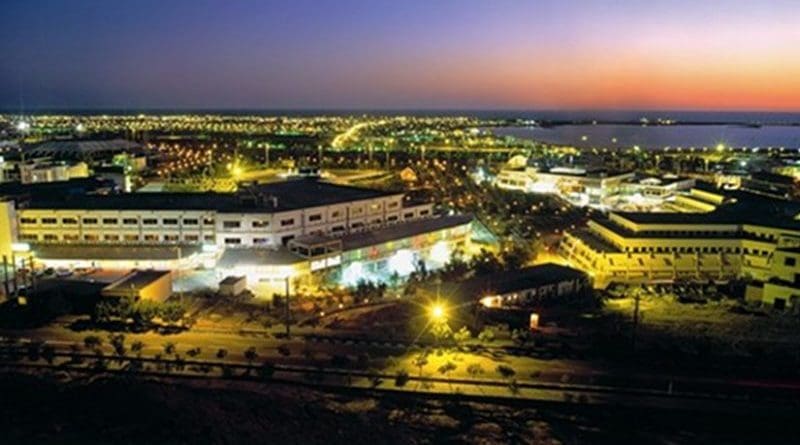The Game-Changing Indo-Iranian-Afghan Deals – Analysis
Low oil prices, the wish of sanctions-hurt Iran to revive its economy by selling oil to energy-hungry India and Afghanistan, and their wish to buy Iranian oil, are merely three reasons why Iran, India and Afghanistan are agreed on the development of the Chabahar port in Iran, and on the construction of a transit corridor through Iran, India and war-torn Afghanistan.
The two agreements signed by them augur well for the emergence of game changers that could advance progress in West, South and Central Asia. Those game changers could also run parallel to China’s economically and militarily significant East-West Silk Road.
Game changer 1 breaking the encirclement by Pakistan and China
To Iran, the Chabahar facility has long been an underused and underfunded through years of international sanctions. India’s development of Chabahar, which is the only Iranian port having access to the Arabian Sea and Indian Ocean, would achieve much more than empowering India and Afghanistan to bypass Pakistan’s ban on transit through its territory and to enhance their connectivity with Central Asia. The completed Chabahar port would also help India to break its encirclement by the China-Pakistan Economic Corridor (CPEC) and the string of bases China has built along sea lanes extending from its mainland to Port Sudan.
While India intends to use Chabahar primarily for commercial purposes its interest in building the port reflects its need to counter China’s operative control of Pakistan’s Gwadar port, which is CPEC’s outlet to the Indian Ocean. Gwadar has given China a permanent vantage point in the Indian Ocean and Persian Gulf. From Chabahar India could also keep an eye on what China is doing in the Middle East. Chabahar and Gwadar symbolise the Sino-Indian rivalry in the Arabian Sea, Indian Ocean and Persian Gulf.
Game changer 2 What India, Iran and Afghanistan will gain from Chabahar
Wanting to increase Iranian energy imports and involved with several projects in Iran, India hopes to make Chabahar fully operative by the end of this year. Specific timelines have been laid down for the completion of the venture.
Lying outside the Persian Gulf, the completed Chabahar port will give Iranian ships direct access to the Indian Ocean and Indian ships direct access to the Iranian coast. From Chabahar a railway line to the Afghan border town of Zaranj will allow India to circumvent Pakistani territory. Transport costs and freight time from India to Central Asia could be cut by one third via Chabahar.
Landlocked Afghanistan would get an opening to the sea – an outcome that is favoured by the U.S., which was once determined to isolate Iran. As American and NATO troops withdraw from Afghanistan, the Chabahar route would increase Indian influence in Afghanistan – and hopefully, marginalize extremist-exporting Pakistan. Washington has backed the Indo-Iranian-Afghan plans because access to Afghanistan via Chabahar would help India increase its contribution to Afghanistan’s progress. The US also sympathizes with India’s aim of deepening its energy ties with Central Asian counties.
China’s credentials cannot be ignored
Tehran needs Indian and Chinese markets for its oil and investment to strengthen its economic sinews. But political rivalry prevails. Tehran’s fears that China’s Gwadar project would weaken Iran’s position as the entrance to Central Asia prompted it to develop Chabahar with India’s help.
However, China has taken the lead in Iran. Unlike India, China defied international nuclear sanctions on Iran, bought nearly half of its oil exports and saved Iran from becoming an international outcast. Entering the space vacated by Western companies that became jittery when sanctions were imposed on Tehran, China gained easy access to Iran’s energy resources.
So when American-led sanctions on Iran were lifted last January China was Iran’s largest trading partner. Bilateral Sino-Iranian trade stands at around $ 52 billion. In contrast, trade between Iran and India amounts to a mere $ 9 billion.
Since the signing of the Indo-Iranian Memorandum of Understanding in May 2015 to develop Chabahar Beijing made several competitive offers to Tehran to invest in and construct the port – but India warded China off and cut the deal.
But New Delhi will meet with stiff competition from China. Unlike India, Iran has welcomed China’s Silk Road initiative. China has already displayed its “connectivity credentials” between Central Asia and Iran, while India has been slow to establish them. Last February the first train connecting China to Iran made a 9, 500 kilometer journey from China’s eastern Zheijiang province via Kazakhstan and Turkmenistan to Tehran. And during the visit of President Xi Jinping to Tehran last January China and Iran upgraded their tie to a Comprehensive Strategic Partnership.
Will US policy be also a game changer?
The completion of Chabahar port would weaken Pakistan’s grip over Indo-Afghan trade and increase Indian influence in Afghanistan. It remains for Washington to use its considerable military and economic leverage over Pakistan to dissuade it from exporting extremists across the Durand Line and to foster the peace and stability in Afghanistan which are essential for its progress – and for India to play a constructive role in Afghanistan.
Outlook
The Chabahar agreement simultaneously anticipates the strengthening of economic connectivity between Iran, India, Afghanistan and Central Asian countries and highlights Sino-Indian rivalry in Iran. With India and Afghanistan perceiving the accord on Chabahar as changing the history and geography of South and Central Asia the chances are that India, Iran, Afghanistan, China – and perhaps the US – will, consequently and subsequently, play a new great game in Asia.

